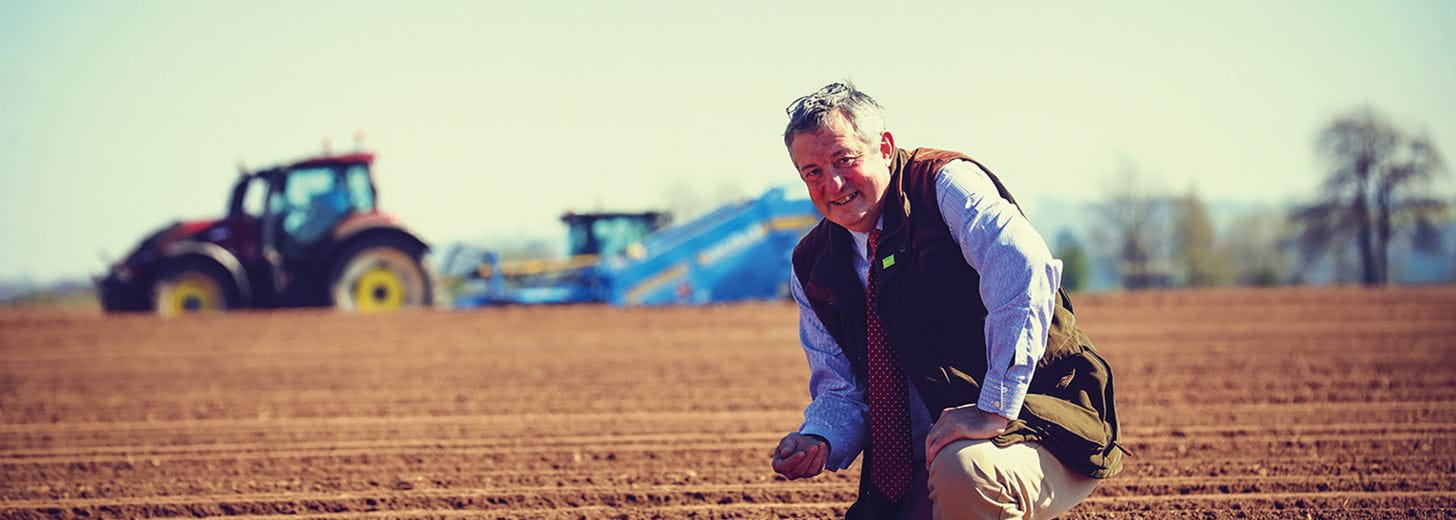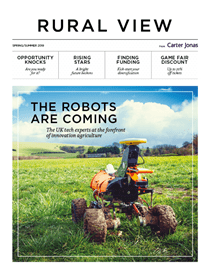Yield mapping allows farmers to understand what is going on in the field, identifying areas that are under performing, over performing or average. Jon Birchall, Carter Jonas’ director of agribusiness wants to embed new ideas and new technology such as yield mapping into his role, bringing smarter and more efficient ways to identify where problems might lie, and the best ways to address them.
In 2010, Jon Birchall was named BBC Farmer of the Year in recognition of his management of the 800ha Kings Walden Estate in Hertfordshire. The award reflected his passion for conservation agriculture and the success he enjoyed in moving from an intensive arable system into one built on extensive grazing.
Jon’s approach was to analyse every part of the farm to evaluate its potential; where crops would thrive and be profitable, he would plant them, but poor land was not allowed to swallow huge investment. Instead it was turned over to grass, beetle banks, skylark plots and nectar mixes.
Nine years later, Jon is the new director of agribusiness for Carter Jonas and says his principal vision for estate management has not changed. “Back then, we knew landowners were going to have to provide more justification for subsidy payments and that’s exactly what has happened,” Jon said. “Now businesses are going to have to be really focused about how they get the most out of their land, and for some that will mean a new way of thinking. “I see my role as helping clients achieve the best possible financial results, but also improving the landscape.”
I see my role as helping clients achieve the best possible financial results, but also improving the landscape.
Jon is based at the firm’s Shrewsbury office – across the border from his home county of Staffordshire – but he prefers to be out seeing clients. Up and down the England-Wales boundary is where he has operated for the past five years.
Before joining Carter Jonas last year, Jon spent four years at Balfours, mainly advising on contract farming agreements (CFAs). “At interview, I was told they were looking for someone with a bit of practical experience and a few grey hairs – which I thought was a brilliant job description – and I managed to scrape in on those criteria!” he said. “Working on CFAs, I realised what an efficient way of working it was to have contractors coming in on a fixed fee. You can turn your costs on and off and the contractors appreciated working with someone who had a practical and technical background. “We were able to start putting record-keeping in place and working out new techniques to generate the best returns.”
I want to bring the best of technology to our farms so we can help.
He is a big believer in the application of technology to advance the usefulness of data and records for improving farming operations, and this will be a key part of his new role. “Of course Carter Jonas has a long history in farm agency, handling Basic Payment Scheme (BPS) claims and stewardship agreements for example,” Jon continued. “We are in a new place now, and I want to bring the best of technology to our farms so we can help, through improved farming practices, to replace some of the lost income when BPS disappears. “There are a huge number of things we can start to look at.”
It was 2001 when Jon bought his first yield-mapping combine. “I was the first to shout about how great it was,” he says, “but I couldn’t tell anyone why it was so great. “Since then I have generated lots of pretty maps but not done anything with the data.” Using the resources available through Carter Jonas’ GIS department, the team has been able to marry together historic yield maps and production costs in a single platform to create a net margin per hectare map. On the map (similar to the example in this article), a traffic light system highlights zones which are underperforming (in red), over performing (in green) or average (in orange), and is accurate to just 10m2. Jon said: “When we first created the map I expected to just see red lines around the edges of the fields, but we got lots of different zones. “Some of it will be compaction, and others will be purely down to soil type or the previous crop. There is no single factor that correlates with all of it. “It really is an amazing tool to understand what is going on in the field, where the problems are, and how we may be able to start to address them.”
It really is an amazing tool to understand what is going on in the field.
Putting a monetary value on every action is where Jon wants to get to. “Everyone is used to seeing nice fields with a single crop in them. I’m proposing that, in the future, a field could have a 16-metre stewardship margin adjacent to the hedge, with a three-metre sacrificial strip adjacent to that for machinery to turn on, minimising the area exposed to compaction. “Other stewardship options would be located on the regions of the field which have consistently under performed, and can’t be improved. “Yield per hectare is irrelevant, it’s profit per hectare that counts. I know that represents a change of mindset, but I truly believe that’s what is required.”
Jon admits getting landowners to change their mentality will be a slow burner, but will be encouraged by government policy as well as the financial case. “If I’ve taken land with inherently poor profitability out of the equation, and there’s more land going into environmental schemes, there is no downside,” he added.
If you’re interested in working with Jon on data sharing in order to advance the mapping technology, get in touch on 01743 213284 or jon.birchall@carterjonas.co.uk.
To read more articles like the one above click the link below to download the full publication.
Inside this Spring/Summer 2019 edition of Rural View, you will find articles about crops being sown, grown and harvested without a single person entering the field, as well as an interview with the Small Robot Company, conversations with the next generation about the rapid pace of change and what this means for their careers, and how technology can be used to harness opportunities and make businesses more resilient, plus many more.
Latest news
- DEFRA has today opened the Improving Farm Productivity grant
- Carter Jonas Reports Half Year Results for 2020
- Carter Jonas Strengthens Rural South West Team With Senior Appointment
- Battery Energy Storage
- Carter Jonas signs-up to Time to Change initiative
- Raft of Promotions at Carter Jonas
- Carter Jonas Achieves Gold Investors In People Accreditation
- Newbury Straw Sale met with Selective Trade as Spring Approaches
- Newbury Straw Sale met with buoyant trade






